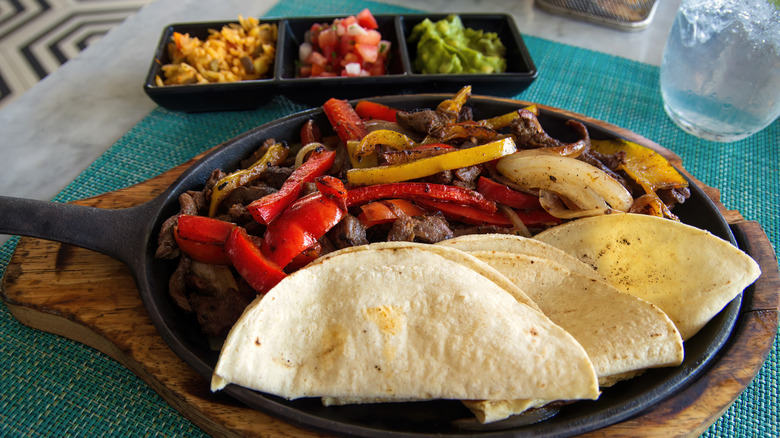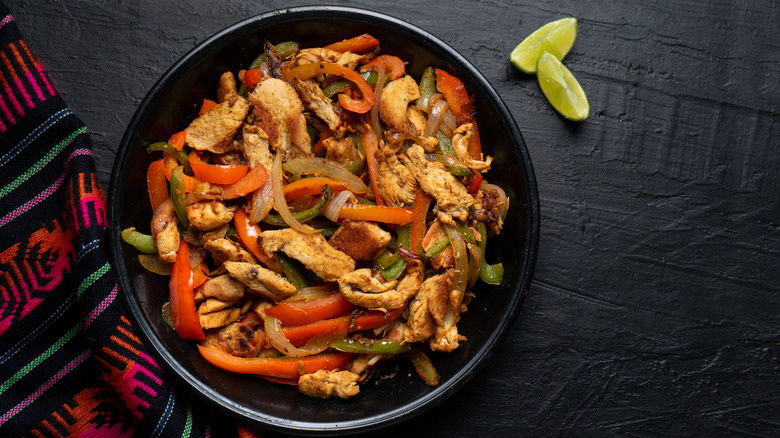Cook Your Fajitas On A Griddle For That Next-Level Char
We may receive a commission on purchases made from links.
When it comes to fajitas, nothing makes them better than a flat-top griddle. Designed to have adjustable zones of heat with a large surface area, you can easily mix and isolate ingredients to suit your needs. And with more griddles than ever on the market, it's easy to find one at your price point, from a Traeger Flatrock to a Blackstone.
The key elements of any successful fajita recipe are the Maillard reaction — the flavorful crust on proteins that starts around 300 degrees Fahrenheit — and caramelization. (Granted, there is a difference between the Maillard reaction and caramelization, and that lies in the temperature.) Whereas lean meats benefit from high heat and fast cooking times, vegetables may need a bit less heat and more time on the griddle to soften up properly. Achieving that next-level char without sacrificing other qualities in your ingredients is all about controlling the temperatures.
Griddles offer that control in a way that few other cooking tools can. Since they can heat up and cool down quickly and have adjustable heating elements, there's plenty of wiggle room to adjust your temperature as needed. Fajitas are a dish of many ingredients, after all, and nailing the char for each and every ingredient requires you to understand exactly how they react to heat on a griddle.
Fajita ingredients on a griddle
If your griddle has multiple zones, you'll want to use one for meats and another for vegetables. If it has a third zone, this is the perfect place to warm up tortillas or melt some cheese.
For proteins, you want to aim for something that's got a lot of surface area, like flattened chicken breasts or tenderloin chops. The best cut of steak for fajitas is either flank or skirt as they both love a good marinade and cook well at high temperatures. Avoid griddling too many steaks at the same time to guarantee a nice crust, and keep the surface piping hot. For any meat, lay it directly on the hottest part of your griddle and only move it when it's time to flip. This ensures it gets plenty of char without tearing and losing its internal juices.
Peppers and onions are mainstays of fajitas and cook similarly. If you like them to have a bit of crunch, keep your heating element on high and cook for short periods while stirring often. If you like them softer with some caramelization, reduce the heat and stir less often to keep a bit of char. Warm tortillas are less likely to break, so heat them either on the corner of your griddle or over an element on medium. This is also a great opportunity to pre-melt cheese. Simply sprinkle some directly on the cooking surface, steam it, and, using a spatula, scoop it onto a tortilla once ready.


